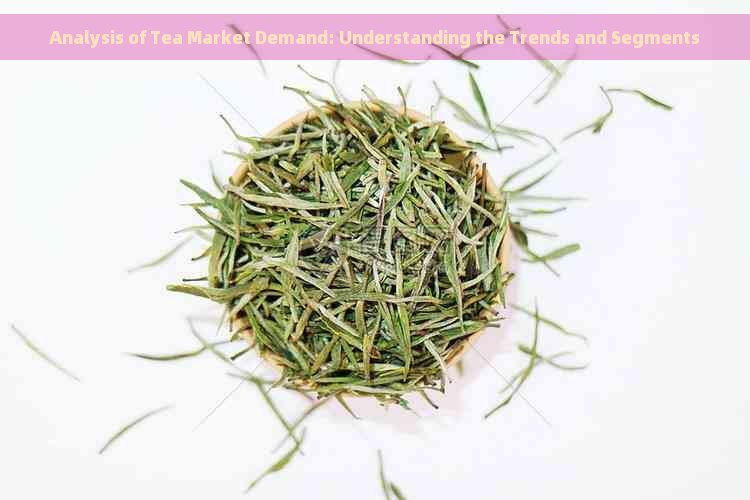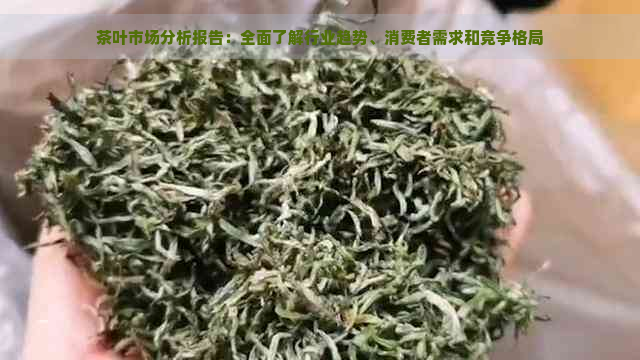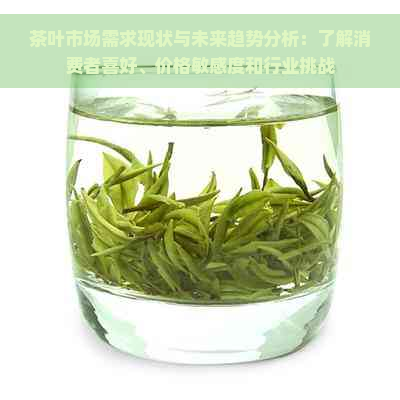Analysis of Tea Market Demand: Understanding the Trends and Segments
Tea, a timeless beverage with a rich history, has transcended cultural boundaries and become a staple in the dly lives of millions around the globe. In recent years, the tea market has witnessed a significant transformation, driven by evolving consumer preferences, health consciousness, and the introduction of innovative products. This article delves into the intricacies of the tea market demand, analyzing the trends and segments that shape this dynamic industry.
内容简介或引语

The global tea market has experienced remarkable growth, with consumers increasingly seeking healthier and more sustnable beverage options. As the demand for tea diversifies, understanding the market trends and segments becomes crucial for stakeholders to capitalize on the opportunities presented. This article explores the tea market demand, highlighting the key factors driving its expansion, the emerging trends, and the various segments that contribute to its overall growth. By delving into the intricacies of the tea market, businesses can tlor their strategies to meet the evolving needs of consumers, ensuring long-term success.
茶叶的市场需求怎么样呢 (How is the Market Demand for Tea?)
The tea market has witnessed a robust increase in demand, fueled by a growing awareness of health benefits and a diverse range of offerings. According to recent market research, the global tea market is expected to grow at a CAGR of roximately 4.5% over the next decade. This growth is attributed to several factors, including changing lifestyles, increasing health consciousness, and the proliferation of new tea varieties.
One of the primary drivers of tea market demand is the perception of tea as a healthy beverage. Tea is known for its antioxidants, which help in reducing the risk of chronic diseases such as heart disease and cancer. Additionally, tea's natural caffeine content provides a gentle energy boost without the jittery effects often associated with coffee. As consumers become more health-conscious, the demand for tea continues to rise.
茶叶的市场需求分析 (Analysis of Tea Market Demand)
The tea market is segmented into various categories based on type, flavor, and region. The following analysis highlights the key segments contributing to the overall market demand:
1. Type of Tea: The tea market is dominated by black tea, followed by green tea, white tea, and other variants such as oolong, pu-erh, and herbal teas. Black tea, being the most widely consumed type, accounts for a significant share of the market. However, green tea has gned immense popularity due to its health benefits, particularly in regions like Asia, where it is traditionally consumed.
2. Flavor and Ingredients: The tea market has seen a surge in demand for flavored teas and those infused with additional ingredients. Herbs, fruits, flowers, and spices are commonly added to enhance the flavor and aroma of tea. This trend is driven by consumers seeking unique and customizable tea experiences. Companies are increasingly experimenting with new flavors and combinations to cater to this demand.
3. Region-wise Demand: The demand for tea varies significantly across regions. Asia-Pacific is the largest market for tea, with countries like China, India, and Japan leading the consumption. In Western countries, tea consumption has also grown, with the United States and the United Kingdom being major markets. The Middle East and Africa are emerging markets, driven by changing tastes and increasing health awareness.
茶叶市场需求的趋势 (Trends in Tea Market Demand)
The tea market is influenced by several trends that are shaping its growth and dynamics:
1. Health and Wellness: As mentioned earlier, the growing preference for health-conscious beverages is a significant driver of tea market demand. Consumers are increasingly seeking natural and organic tea options, free from artificial additives and preservatives. This trend is expected to continue, with companies focusing on producing high-quality, healthful tea products.
2. Sustnability: Sustnability is another crucial trend in the tea market. Consumers are becoming more aware of the environmental impact of their purchases and are opting for teas that are sourced sustnably. Tea producers are responding by adopting eco-friendly practices, such as organic farming and reducing plastic packaging.
3. Innovation and Convenience: The tea market is witnessing a surge in innovative products that cater to the busy lifestyles of modern consumers. Ready-to-drink (RTD) teas, tea bags, and loose-leaf tea infusers are gning popularity due to their convenience. Companies are also exploring new packaging formats and on-the-go options to meet the evolving needs of consumers.
4. Digital Marketing and E-commerce: The rise of digital marketing and e-commerce has transformed the way tea is sold and marketed. Online platforms provide consumers with a wide range of options and the convenience of shopping from home. Companies are leveraging digital marketing strategies to reach a broader audience and build brand loyalty.
In conclusion, the tea market is experiencing a dynamic growth trajectory, driven by evolving consumer preferences, health consciousness, and innovative product offerings. By understanding the trends and segments shaping the market, businesses can position themselves to capitalize on the opportunities presented. As the demand for tea continues to rise, the industry will likely witness further innovation and diversification, ensuring its long-term success.
精彩评论





